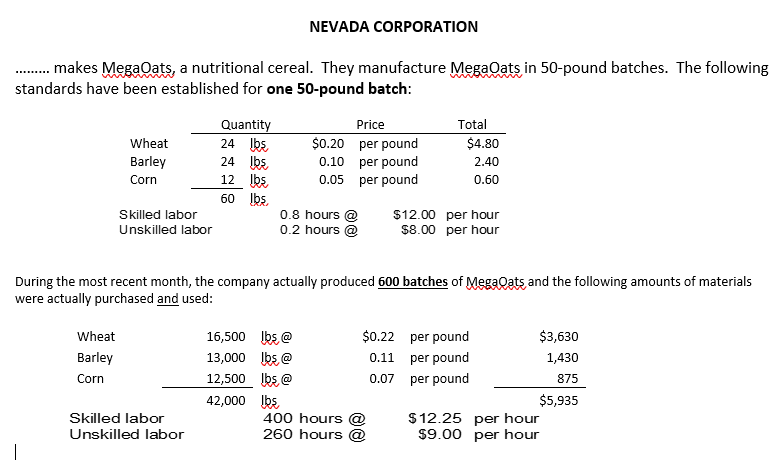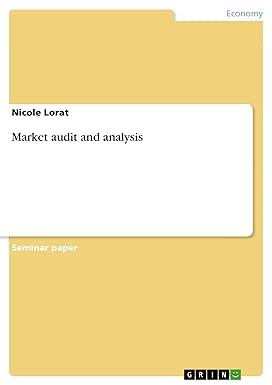Question
Required : DO THE FOLLOWING FOR AND LABOR ONLY Calculate the total standard cost (do individual components and then use totals). Determine the total standard

Required: DO THE FOLLOWING FOR AND LABOR ONLY
- Calculate the total standard cost (do individual components and then use totals).
- Determine the total standard cost variance.
- Break the total cost variance up into the price and usage variances.
- Further break down the usage variance into Mix and Yield variances.
Consider the following: In #3 above, you took the total variance (difference between actual and standard) and you realized that part of that was caused by the price being different, and part was because of the usage was different, and so you computed usage variance to show what part was caused by that factor.
Now think if we have more than one material, as we do here, this variance itself can be caused by two things: 1) a different mix of wheat, barley and corn was used as compared to the standard mix, or 2) the company just used a higher or lower total amount of stuff than they should have. We would like to further analyze our usage variance (above) by breaking it up into two variances that show this a mix variance and a yield variance. The mix variance will tell how much more (or less) it cost because of the different mix of ingredients. The yield variance will tell us how much of this usage variance was caused by a difference in the overall quantity of ingredients (than should have been used).
Thats what we want to accomplish. As a hint: Take your usage variance and set it up so you can zoom in on it. Put your middle thing (standard cost of the raw material inventories) on the left (Ai x Sp) and put the standard on the right (Si x Sp). Thats your usage variance. Now we want to create a new middle part where we flip one switch (change one of the factors). Start on the left. Change the mix (keeping the total quantity of input and price the same). That means use the same total quantity of lbs, but change from the actual mix to the standard mix percentages. Now do just what we did before and see how the usage variance breaks up.
NEVADA CORPORATION ...... makes MegaOats, a nutritional cereal. They manufacture MegaQats in 50-pound batches. The following standards have been established for one 50-pound batch: Quantity Wheat 24 lbs Barley 24 lbs Corn 12 lbs 60 lbs Skilled labor Unskilled labor Price $0.20 per pound 0.10 per pound 0.05 per pound Total $4.80 2.40 0.60 0.8 hours @ 0.2 hours $12.00 per hour $8.00 per hour During the most recent month, the company actually produced 600 batches of MegaQats and the following amounts of materials were actually purchased and used: Wheat Barley Corn 16,500 lbs @ $0.22 per pound $3,630 13,000 lbs @ 0.11 per pound 1,430 12,500 lbs @ 0.07 per pound 875 42,000 lbs $5,935 400 hours @ $ 12.25 per hour 260 hours @ $9.00 per hour Skilled labor Unskilled laborStep by Step Solution
There are 3 Steps involved in it
Step: 1

Get Instant Access to Expert-Tailored Solutions
See step-by-step solutions with expert insights and AI powered tools for academic success
Step: 2

Step: 3

Ace Your Homework with AI
Get the answers you need in no time with our AI-driven, step-by-step assistance
Get Started


